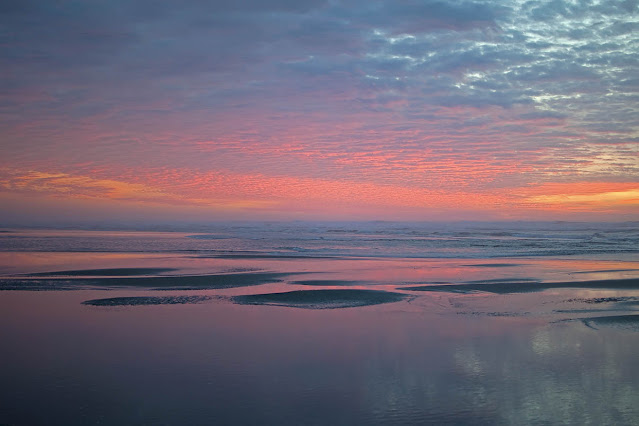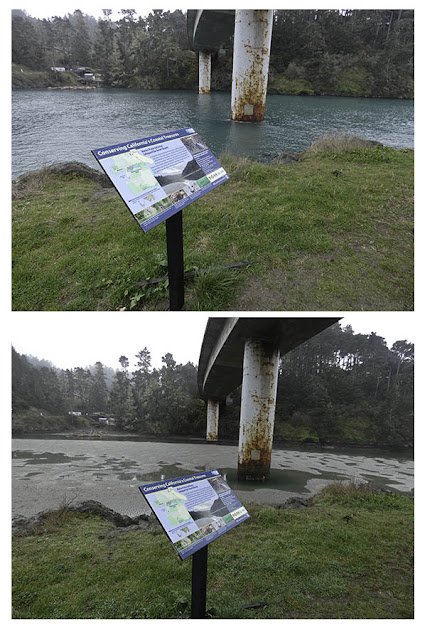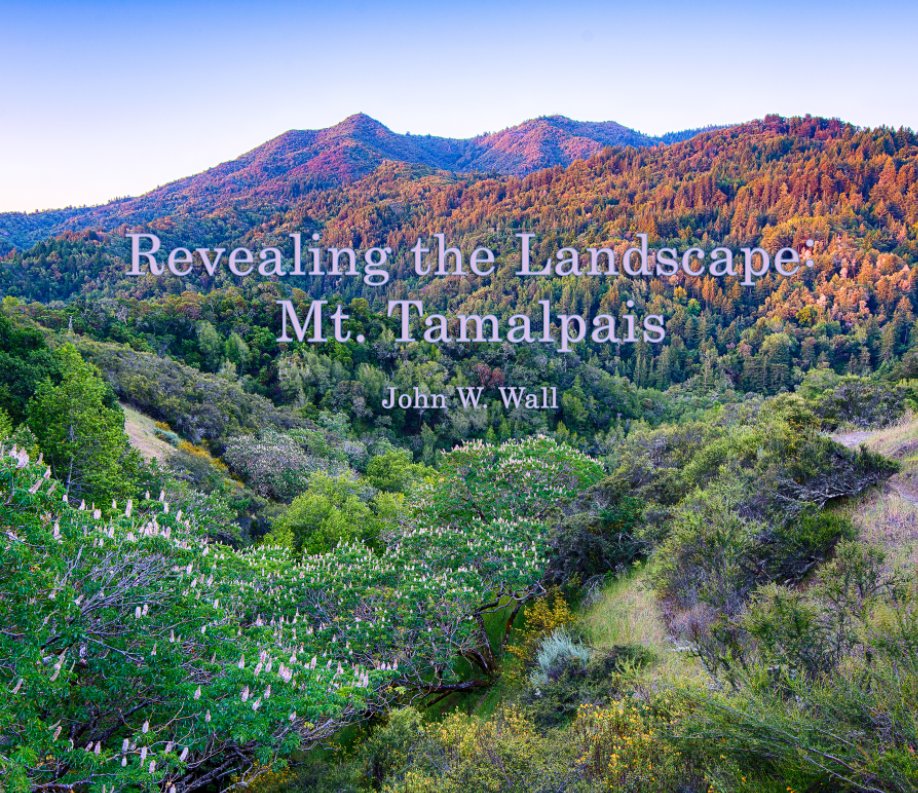 |
| Sunrise Skyline |
The morning got off to a colorful start, and I almost missed it. The cat was meowing for breakfast, and as I went to feed her I forgot to keep an eye on the changing sky. When I noticed what was happening out the window I dropped everything to run upstairs and grab the FZ-80 to get a quick shot out the bedroom window. The cat was completely understanding, and I returned to find her waiting patiently next to her soon-to-be-filled food dish.
I left the door open so she could go out afterwards, then went back upstairs to make myself some oatmeal and coffee before heading up to Mt. Tam to have a look at what the storms have wrought. I'd called the Pantoll Ranger Station the day before to confirm that the upper mountain was really closed (as their web site indicated). The ranger said it would remain closed indefinitely, so I drove up and parked on the shoulder between Bootjack and Pantoll to avoid paying the parking fees at either one, which was eight bucks the last time I checked.
I'm still getting over the flu bug, or whatever it is (still testing negative for Covid-19), so I didn't plan to hike far. I figured I'd head out the Matt Davis Trail a ways to see what I might find. First off, you notice there's a lot of water flowing. You can hear it even when you can't see it. Second thing you notice is that Mother Nature laid out the green carpet for us. Fallen Douglas fir branches were everywhere. Just little ones mostly. The trees that actually topple over, like the two I encountered on the trail, tend to be bay laurels.
Much of the fungi were seriously waterlogged, but I found a few subjects that caught my interest, starting with a blob of witch's butter that had a group of tiny mycena mushrooms (possibly Mycena capillaripes) sprouting in the background. I also found a few furry-stalked Lepiota magnispora, some little orange guys that I thought might be Xeromphalina campanella until I realized the gills didn't attach to the stalk as I expected and the caps lacked striations. The question is, could weathering change all that? Or are these some kind of Lactarius or who-knows-what?
The last mushroom I photographed was an Amanita gemmata that had lost most of its gemmata-ness (the "jewels" or warts of remnant universal veil tissue). A younger one nearby still had some of the veil tissue on its cap. I replaced the younger one in its original hole after taking the picture, and I only wish I could easily find out whether it has continued to grow.
After emerging from the forest I continued a short distance to take in the view along Bolinas Ridge, where the Matt Davis Trail continues toward Stinson Beach, before turning around to head back. Looking up the hill I could see that the Douglas fir whose iconic top fell off seven years ago during a heavy December storm continues to lose more of its limbs.
My only disappointment of the hike was finding no slime molds, not even species I've seen before. I just finished reading The Emperor of All Maladies by Siddhartha Mukherjee and learned that a guy named George Beadle was studying slime molds when he discovered that genes encode the proteins that make cells function. Unfortunately, I am unable to verify that. The information I find online all points to a fungus, Neurospora crassa, as the subject of Beadle's study, not a myxomycete. Oh well.
At around the same place in the book the author mentions that biologists first thought DNA was mere "cellular stuffing." A mentor of James Watson, Max Delbruck, even dubbed DNA a "stupid molecule," although according to The Atlantic, “Delbrück, Watson’s
most important mentor, used such blunt skepticism to spur scientific rigor
among his followers. The 'stupid molecule' remark, then, is best understood as
prologue to the solution of the double helix in 1953, rather than as an
obstacle to its having been solved sooner.”
Although the rain is sporadic today, it's not sporadic like it was the day before yesterday when we had those excellent thunderstorms come through. I walked over to Grandview Park to take in the storm and photograph any rainbows that might pop out. I got more than I bargained for with the storm when the temperature dropped and hail began pouring down. I didn't even see the bolt that probably hit Sutro Tower, but I sure heard the peeling CRRRRRAAAACK! of thunder whose thrilling surprise raised the hairs on the back of my neck.
 |
| Fungal Friends |
 |
| The First of Several Waterfalls |
 |
| Weathered Lepiota |
 |
| A Fresher Lepiota |
 |
| One of my favorite spots on this section of the Matt Davis Trail. |
 |
| Falls Along Matt Davis Trail |
 |
| White-Spored, Bland-Smelling Orange Mystery Fungus |
 |
| Amanita gemmata |
 |
| First of two trail interruptions due to fallen trees. |
 |
| The Season's Last Blooming Coyote Brush |
 |
| Partial Rainbow with Mt. Tam in the Distance |
* * *



























































